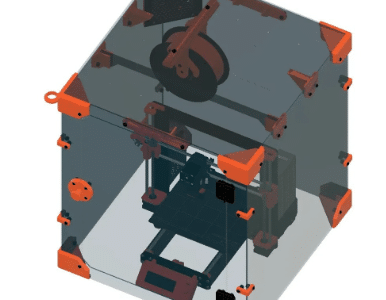
Your car’s safety and efficiency hinge on its tires. Ensuring their longevity and optimal performance involves two vital maintenance services: tire rotation and wheel alignment. Though they both involve your tires, they address distinct aspects and serve different purposes. Discover more insights with guidance from Cash For Old Cars Company in Brisbane.
Tire Rotation: Spreading the Wear and Tear
Imagine carrying a heavy backpack on one shoulder all the time. Eventually, that shoulder would feel more strain than the other. Similarly, tires wear unevenly due to various factors like:
- Weight Distribution: The front tires typically bear more weight than the rear due to the engine placement in most vehicles.
- Steering: The front tires handle turning, putting additional stress on them compared to the rear.
- Driving Habits: Frequent cornering or aggressive braking can lead to uneven wear patterns.
Tire rotation involves systematically moving the tires around your vehicle at specific intervals. This evens out the wear and tear across all four tires, maximizing their lifespan and performance. Here’s a breakdown of typical rotation patterns:
- Front-wheel drive: Front tires move diagonally to the rear, and rear tires move straight to the front.
- Rear-wheel drive: Rear tires move diagonally to the front, and front tires move straight to the back.
- All-wheel drive: Consult your owner’s manual for the specific rotation pattern recommended by the manufacturer.
Frequency of Tire Rotation:
Most car manufacturers recommend rotating your tires every 5,000 to 7,000 miles, or about every six months. However, consult your owner’s manual for the specific timeframe suggested for your vehicle. Additionally, factors like driving habits and road conditions can influence the recommended rotation interval.
Benefits of Tire Rotation:
- Extended tire life: By distributing wear evenly, you can potentially get more miles out of your tires before needing replacements.
- Improved fuel efficiency: Tires with uneven wear can affect rolling resistance, which can decrease fuel efficiency.
- Enhanced handling and safety: Properly balanced tires contribute to better handling and overall vehicle stability, improving safety.
Wheel Alignment: Keeping Your Wheels in Line
While tire rotation addresses wear patterns, wheel alignment focuses on the angles of your wheels relative to the road and each other. These angles are crucial for proper vehicle handling and tire wear. Over time, due to various factors like:
- Hitting potholes or curbs: These impacts can cause the alignment to shift slightly.
- Normal wear and tear: Suspension components can wear out, affecting alignment.
- Uneven tire pressure: Incorrect tire pressure can contribute to alignment issues.
Misaligned wheels can lead to several problems:
- Uneven tire wear: Similar to uneven weight distribution during rotation, misalignment can cause specific areas of the tire to wear faster.
- Reduced fuel efficiency: Improper alignment can increase rolling resistance, leading to decreased fuel economy.
- Poor handling: Difficulty steering, pulling to one side, and a feeling of instability while driving can all be signs of misalignment.
Signs You Might Need a Wheel Alignment:
- Uneven tire wear: This is a major indicator of potential alignment problems.
- Pulling to one side: If your car consistently drifts to the left or right while driving straight, it’s a telltale sign of misalignment.
- Vibrations in the steering wheel: This can occur at higher speeds and indicate alignment issues.
Frequency of Wheel Alignment:
While not as frequent as tire rotation, wheel alignment should be checked at least once a year or every 5,000 to 10,000 miles. However, getting it checked after hitting curbs, potholes, or experiencing any of the aforementioned signs is highly recommended.
Conclusion:
Both tire rotation and wheel alignment play vital roles in maintaining your car’s safety, performance, and tire life. By understanding the differences between these services and following the recommended maintenance intervals, you can ensure your car rolls smoothly and safely for miles to come. Remember to consult your car’s owner’s manual for specific recommendations and don’t hesitate to seek professional help from a qualified mechanic if you have any concerns.
visit: https://getcashforcarz.com.au/cash-for-cars-caboolture/
FAQ’s
- What is tire rotation, and why is it important?
- Tire rotation involves moving tires from one position to another on your vehicle to ensure even tread wear. It’s essential for maintaining optimal traction, handling, and extending tire lifespan.
- How often should I rotate my tires?
- It’s generally recommended to rotate your tires every 6,000 to 8,000 miles, or as specified in your vehicle’s owner’s manual. However, more frequent rotation may be necessary for specific driving conditions.
- What are the benefits of regular tire rotation?
- Regular tire rotation promotes even tread wear, which helps maintain balanced handling, improves traction, and extends the overall life of your tires. It also ensures consistent performance and safety.
- What is wheel alignment, and why is it important?
- Wheel alignment refers to the adjustment of the angles of the wheels to ensure they are perpendicular to the ground and parallel to each other. Proper alignment promotes even tire wear, optimal handling, and fuel efficiency.
- How do I know if my car needs a wheel alignment?
- Signs of misalignment include uneven tire wear, steering wheel vibration, pulling to one side while driving, or a crooked steering wheel when driving straight. If you notice any of these symptoms, it’s time for a wheel alignment check.



